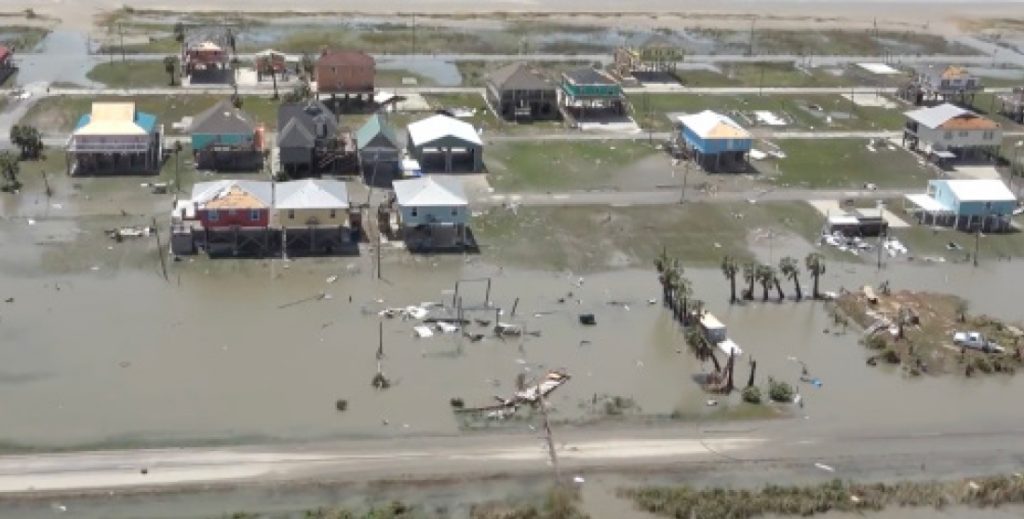Since May 9, viewers of the Animal Planet network have had a new show to watch called Louisiana Law. The program “follows the men and women of the Louisiana Department of Wildlife and Fisheries as they patrol one of the most geographically diverse states in the U.S., with a jurisdiction that ranges from 200 miles out into the Gulf of Mexico up to the border of Arkansas,” according to the Discovery Channel.
Animal Planet informs us that Louisiana is home to more than a million alligators, 160 species of birds and less common animals, such as bobcats and black bears.
In the first episode of the show, Cpl. Michael Hebert took custody of a flounder that was caught in an illegal manner in Cameron Parish, then gave the fish to a family in need. While this may not exactly sound like riveting television, I’m told by those who saw it that the story was actually pretty interesting. What sounds a bit more intriguing to me is an episode in which agents in St. Bernard Parish encounter a boat that is full of oysters but devoid of licenses.
The program airs Sundays at 8 pm. You can follow the show on social media by using the hashtag #LouisianaLaw. Get updates from Animal Kingdom on Facebook, Twitter, Instagram and TikTok.
Reeser Poetry: American Plains
Lake Charles poet and McNeese MFA graduate Jennifer Reeser recently started a blog in which she chronicles a journey she’s making across the American Plains. If you’re familiar with Reeser’s work, you might guess that her trip has something to do with the poetry of the American Indians who lived in the Plains. You’d be right.
In the first post, Reeser explains that in the area around Knife River Indian Villages, N.D., the Native Amerians had such a close relationship to the corn they grew that they actually seemed to feel affection for it. In a moving passage, she explains that some Native American youths used to sing to their corn. She quotes the writings of Buffalo Bird Woman, the last member of the Hidatsa tribe: “… our Indian ways are almost gone. Sometimes I find it hard to believe that I ever lived them … Often in summer, I rise at daybreak and steal out to the cornfields; and as I hoe the corn, I sing to it, as we did when I was young. No one cares for our corn songs now.”
Reeser provides a link for her recent translation of a traditional Mandan tribal corn song, which just appeared in the journal Literary Matters.
If you want to follow Reeser’s visits, go to jenniferreeser.com. The blog entries about the American Plains can be found under the heading “Recent Posts.”
Panhandling Problem? Really?
We are told by The Current that the Lafayette Police Dept. has issued warrants for drug distribution for two dozen people who are thought to be local panhandlers. However, reports the magazine, only two arrests have come out of the flock of warrants.
This activity follows the posting of “controversial signs” that warn people in Lafayette not to give money to panhandlers. I suppose that many people in Lafayette think as I do, namely, that if I want to give money to panhandlers that’s nobody’s business but my own. I don’t feel the need for any government signs that provide me with moral instruction.
But the warrants and the signs are not the full extent of Lafayette’s official anti-panhandling movement. For some time, the city government considered an ordinance to ban panhandling until a 2020 motion indefinitely deferred such a ban.
What’s In Store For Lower Cameron Parish?
My goodness. Is panhandling the biggest problem a city the size of Lafayette is facing? Or could it just be that some really powerful person in the city has a bee in his bonnet about panhandlers? Maybe it’s time to change the channel.

Creole resident Cherie Hardie, whose family is now rebuilding for the third time, is profiled in the piece. Hardie is still young and feels up to the task. But, she says, “my parents, my husband’s parents — they’re all kind of moving away.”
Hurricane Laura brought Creole and Cameron a storm surge as high as 17 feet and winds as strong as 150 mph. The remains of some houses have yet to be found. Hardie’s house got more than 2 feet of water in it in spite of the fact that it had been rebuilt according to revised codes that required it to be elevated by 10 feet.
The parish is considering developing lots with “resilient homes.” And the Advocate cited Parish Administrator Katie Armentor as saying some people are moving to the northern portions of the parish rather than moving out altogether. They then commute south to work in the oil and gas or fishing industries. She also said many are still undecided about whether to live in coastal Cameron Parish. “It depends on insurance. It depends on grant funds. It depends on if [their homes] were substantially damaged or not.” Like many other officials in SWLA, Armentor expresses the need for a federal relief package.
Since Hurricane Rita, precise figures about the parish’s population have been hard to come by. But the statistics we have indicate that after Rita in 2005, Cameron Parish lost one-third of its population. A parish that had a population of 10,000 in the year 2000 went down to 6,800 after Rita and Ike. Before Laura struck, the estimated population of the parish was 7,000. What it is now is anyone’s guess. One sign of the shrinkage is that “three Catholic churches in lower Cameron will be consolidated.”
In addition to the costs of rebuilding, says Hardie, “honestly, finding people to come down here to rebuild [is a challenge] … nobody wants to come down here.”
Months after Hurricane Delta, the parish sometimes runs out of fuel, and there are occasional power outages. Jeff Davis Electric Co-op estimates it would cost $200 million to replace its transmission towers, all of which were destroyed by Laura. As the Advocate interviewed Kristi Bearb, manager of Cameron’s Darla K Food Mart, she had to tell a customer coming in through the door that the operation was out of gas.
Bearb is another person who’s lost three homes. She says she came back this time because her help was needed at the store. “But if it happens again, I’m not [coming back]. It’s too much. Emotionally, it’s too much.”
One gets the feeling from the story that Cameron Parish officials are following the strategy of rebuilding with storm-resistant housing. The Advocate reports that LSU geology professor Craig Colten will soon publish a book on coastal Louisiana titled State of Disaster. His advice for communities like Creole and Cameron: offer voluntary buyouts when possible and encourage those who don’t want to rebuild to move further inland, but not entirely out of the area.
Eaves Family National Reunion
From the Eaves family comes news of the Eaves Family National Reunion, to be held in Natchitoches Aug. 6 and 7 at the Hotel Chateau St. Denis, which is in the heart of the historic area of the city.
The event will be hosted by John Allen and Wanda Eaves of Merryville.
Those who intend to stay overnight may want to book their reservations now, as the hotel has rooms blocked off for the reunion. When you call, mention you are with the Eaves Family National Association to receive your discounted room rate. If you reserve your room online, use the code Eaves 2021 to get the discounted rate.
Guests will start congregating on Friday the 6th for an evening get-together at the hotel. That will be followed by the main event on the 7th. The Hotel Chateau St. Denis is located at 751 Second St.; the phone number is (888) 900-9937.
‘Space Experiment’ In School
The generation now going through school will soon get a chance to be exposed to space-related instruction when a new “space experiment program” becomes available to students in Calcasieu Parish schools at the Region 5 STEM Center.
The Student Spaceflight Experiments Program “is a great opportunity for students to work together to solve complex problems using critical thinking,” says Calcasieu Parish School Board Superintendent Karl Bruchhaus.
The class will enable students in grades 5 and up to develop an experiment in which they study the effects of “micro-gravity.” By winning in a local competition, Calcasieu students can advance as high as the national level. Those who do best at the national level will secure a position on the next spaceflight to the International Space Station.
The United Way of SWLA is providing full funding for the $25,000 cost of the endeavor. Denise Durel, president and CEO of United Way of SWLA, called the new instruction “a unique STEM opportunity” for students to work with “professionals from NASA,” and noted that “this is a real spaceflight research program.”
Students in Allen, Beauregard, Calcasieu, Cameron, Jeff Davis and Vernon Parishes can participate. Teachers will be offered professional development instruction that will familiarize them with the program.

















Comments are closed.